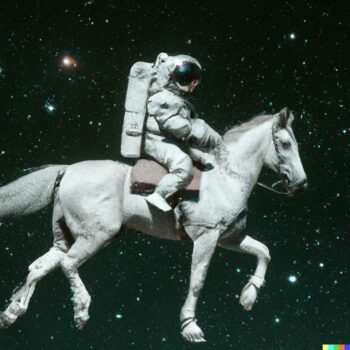Admiring a beautiful painting is like an exotic delicacy for art enthusiasts. But, when the whole world is going digital, can art be far behind?
Every artist lives and breathes in the pursuit of making art that can stir emotions among the viewers and leave them mesmerized. It doesn’t matter whether it’s realism or abstract; a piece of exquisite art can instantly attract the audience.
With modern digital technology, artists don’t need to get flustered about working with a canvas or waiting around for their paints to dry. Digital technology is like Pandora’s box, offering a wide array of media and tools for both students and professional artists.
But as an amateur, it can be overwhelming, and your nerves might get the best of you. So today, we’ll discuss some of the most extraordinary digital art forms and shed light on the latest cutting-edge AI art technology. Let’s get started!
A. Different Types of Digital Art
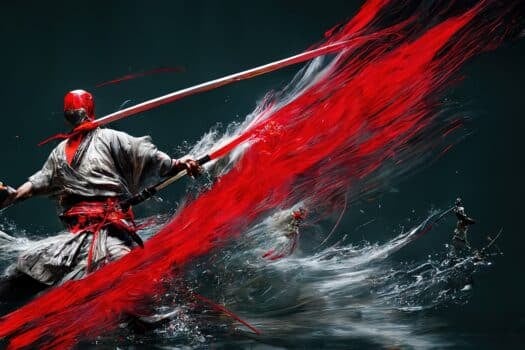
1. 2D Digital Painting
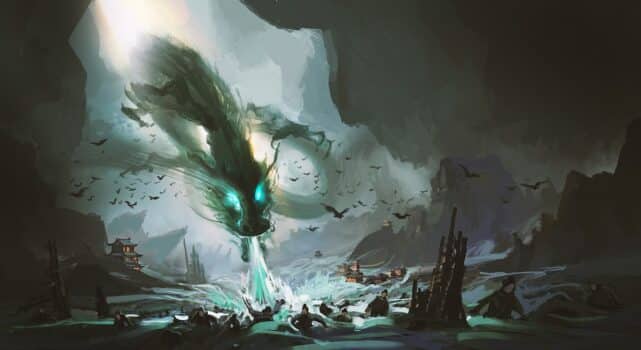
If you are a beginner planning to dip your toes in the arena of digital art, 2D digital painting is the most common digital art form. It aims to replicate the traditional processes of painting as closely as possible, using a tablet and a stylus to offer digital artists the most authentic experience. In fact, in most cases, you can hardly differentiate between hand-painted art and 2D digital art.
You can select from a wide range of brushes, mediums, and paint types, much like conventional art. Watercolors, oil paints, and pastels are pretty popular choices among artists for making 2D digital art pieces. The most attractive feature of digital painting is that you can work with layers and have the liberty to undo your actions at any time without ruining the art piece.
You also get to work with a wide array of colors and adjust the thickness and opacity of different paints. Not to mention, you can easily manipulate the brush strokes and brush textures with a few simple touches on the tablet to make your artwork more realistic.
2. 3D Digital Painting and Sculpting
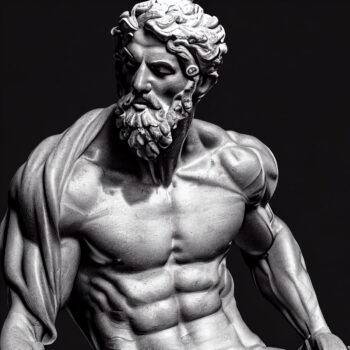
Once you’ve mastered the art of 2D digital painting, you can automatically venture into the world of 3D digital painting and sculpting. This is where the real fun begins because you get to work with 3D models to create astonishing lifelike art pieces, thanks to the advanced digital painting tools.
Here, you get to play with various textures and shades of colors to create lifelike 3D models that can look highly animated or hyper-realistic. Furthermore, 3D sculpting allows you to pose and manipulate a digitally created figure, which is otherwise impossible with real-life sculptures. You can also incorporate clothing and other items into your 3D model to make it more authentic.
It’s safe to say that animation becomes much more efficient when you pair 3D digital painting with 3D sculpting. You can easily create a 3D model of a character and place it or pose it in any scene. World-renowned animation studios like Pixar and Studio Ghibli widely use this digital art form for their animated movies. It’s also quite popular in creating characters, clothing, and other objects in video games.
3. Data-moshing
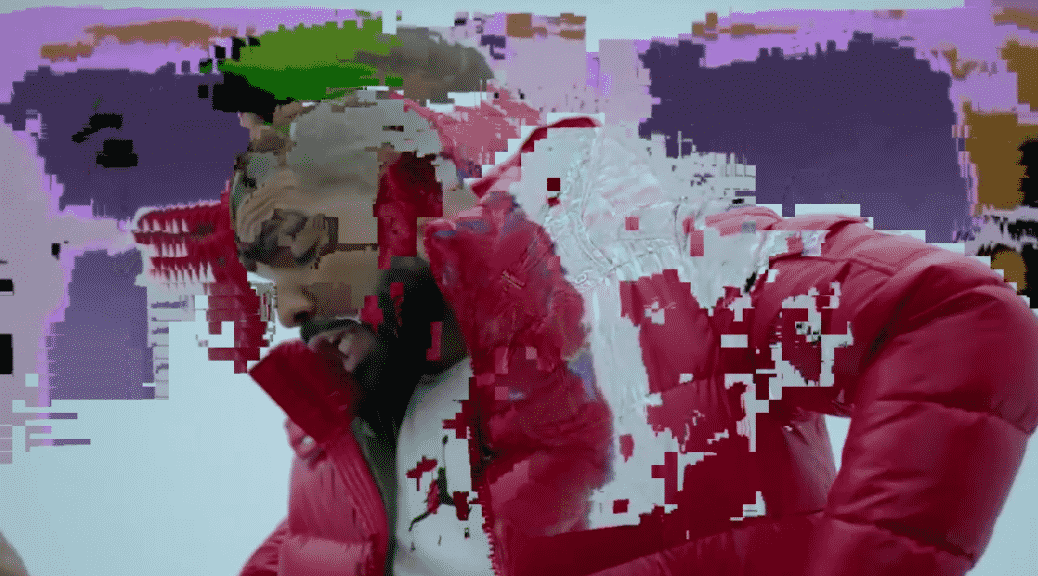
Image via datamoshing.com
Data-moshing is quite an abstract form of digital art compared to the realistic and lifelike appeal of 2D and 3D digital painting. Famously known as glitch art, data-moshing uses programmed glitches and video layering to create abstract digital art pieces and videos that mostly appear like scrambled jigsaw pieces.
Although these digital art pieces might initially appear haphazard or messy, thanks to their bright and vibrant colors, they can offer a thought-provoking psychedelic experience that’s almost ethereal. Digital artists often use data manipulation to create the glitch effect by splicing and layering different videos and 2D or still images. So, data-moshing can help you create a unique digital art piece by distorting reality.
Usually, three reference frames are used to create such digital art pieces – I-frame, P-frame, and B-frame. The I-frame contains data of the entire picture and doesn’t require any additional information, while the P-frame and B-frame need the I-frame to access all the information to display the picture. Hence, these two frames are primarily responsible for creating the glitching effect during data-moshing.
If you want to try your hands at data-moshing, Google has recently introduced the Deep Dream tool, allowing painters and artists to data mosh real-life still images. You can use this art form as an abstract concept art to attract the audience by tickling their visual senses.
4. Pixel Art
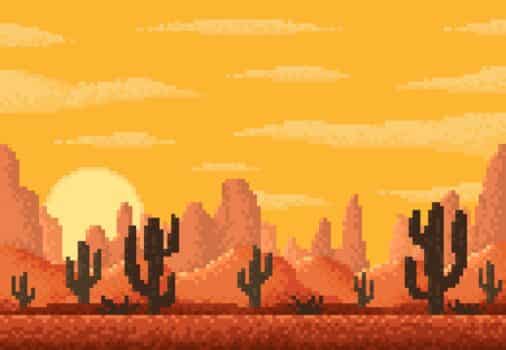
Pixel art features the most fundamental elements of digital art to design intricately detailed art pieces. It uses basic shapes to create both oversimplified and hyper-realistic artworks. The application of pixel art might have gained immense popularity due to modern digital art, but its concept is rooted in the classical styles of Picasso’s cubism and Dali’s surrealism.
Moreover, Pixel art was quite popular in the early computer games when animators used to develop characters and video game backgrounds without wasting too much memory space. That’s why “8-bit” is a common term for Pixel art among old-school animators and game artists.
As one of the pioneers of digital art, Pixel art is associated chiefly with 2D assets. However, it is currently being used to create exquisite high-definition digital artworks using 3D techniques. Also, since animation is a lot easier with Pixel art, it’s still quite popular among artists. You can use special software, such as Krita and Pixen, to create exceptional Pixel art pieces.
5. Algorithmic Art
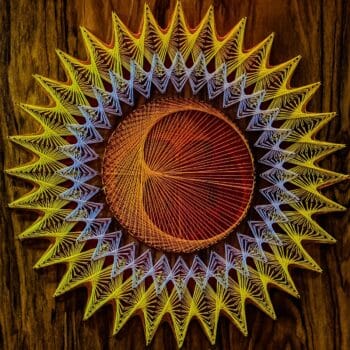
Algorithmic art is a digital generative art that uses an autonomous system of programs and algorithms to create art pieces. Any digital artist needs to be well-versed in using some form of equation or code to develop algorithmic arts. It usually uses these computer programs where the artists may not need to provide any input at all for the painting process.
You can create different algorithms for your art piece in generative computational or mathematical forms featuring various expressions, compositions, and functions. Algorithmic art is commonly used to design word art, computer-generated visual media, logos, and other digital assets.
The most interesting feature of this art form is the use of vectors instead of pixels, allowing you to resize the art pieces based on your algorithmic parameters. You can use a deterministic algorithm if you’re a fan of realism and want to create art pieces that closely resemble real-life objects.
Contrarily, you can include some randomness in your algorithms for a more abstract art piece. Some might question whether algorithmic art is entirely based on computer programs, but creating digital art becomes undoubtedly more convenient and attractive by incorporating algorithms into visual arts.
6. Fractal Art
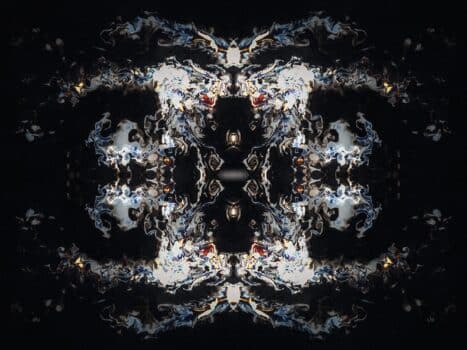
Fractal art basically stems from algorithmic art but features intricate geometric patterns and fractal mosaics that have their origins in classical Middle Eastern and Asian art forms. However, with the growing popularity of digital art, fractal art has become a favorite among Western artists as well.
Artists use computer algorithms, codes, and mathematical equations to create mosaics and patterns in fractal art for 2D and 3D art pieces. Whether animations or still images, you can use various fractal art software to generate visually appealing and abstract digital artworks.
The most intriguing aspect of fractal art is you can see the patterns repeating themselves the more you zoom in, creating a butterfly effect. You can change the variables of your algorithm to change the arrangement and shape of these fractal patterns. Some fractal artists also use very specific algorithms, like the Fibonacci sequence, to create visual art.
Mandelbrot is an iconic fractal art sequence, and you can use different variations of this set to create a fractal art piece. However, the fractal patterns are predetermined according to the equation, so you can’t change the patterns but can experiment with different color contrasts.
You can also explore other fractal arts, including the Lindenmayer Systems, Iterated Function Systems (IFS), Newton fractals, and Polynomial fractals, to name a few.
7. Still Imagery
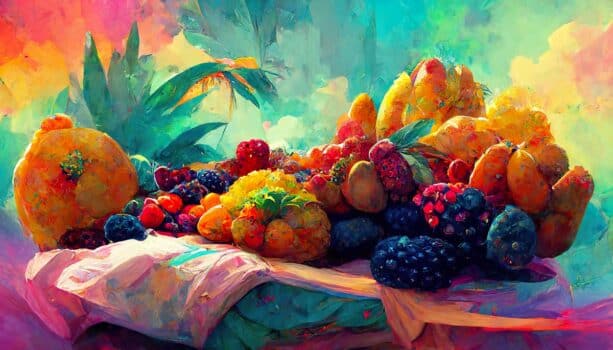
Remember those still-life paintings that you learned during your art school days? In traditional art, still-life painting is often considered a basic stepping stone to learning different painting techniques, such as texturing and shading. This concept also stands true for digital art, and still imagery can be an excellent way to master the necessary skills to create stunning computer-generated 2D and 3D visual arts.
The 2D digital still images or computer graphics are created by combining text, mathematical equations, vector graphics or geometric models, raster graphics or digital images, and so on. You can use any available design software like Flash or Adobe Illustrator to create these two-dimensional still images.
On the other hand, 3D digital still images are developed by using the three-dimensional representations of the stored geometric data for performing calculations or image rendering. It also relies on raster and vector graphics, much like 2D still imagery. These 3D still images are widely used in the graphic design of video games and computer animations. You can also use different modeling software to develop these 3D graphics.
8. CGI Art
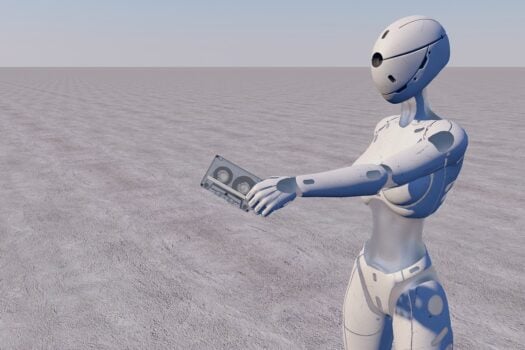
Once you know the basics of 3D still images, you can move on to the much-coveted CGI (Computer-Generated Imagery) art that’s the holy grail of all modern animations. It has become an extremely popular digital art form, with leading Hollywood production houses like Disney and Marvel Studios using it for their movies.
CGI Art involves both static and dynamic images while using 3D computer graphics instead of the 2D versions. In CGI Art, you also have much better control over purely computer-generated animations than any other traditional animation technique. You can shape, resize, and rotate the animation graphics as you please. So, artists often consider the graphics as digital clay in CGI art.
Not to mention, the three-stepped creative process of CGI art makes it convenient to create lifelike 3D models. The objects are initially designed on the computer screen, followed by developing their virtual skeletons. In the end, the final animation is created to complete the CGI figures.
Apart from films and animations, you can also use CGI art for architectural and engineering programs. Once you pair the 3D aspects of CGI with the laws of physics, you can create outstanding art pieces that can imitate real-life events.
9. Vector Painting
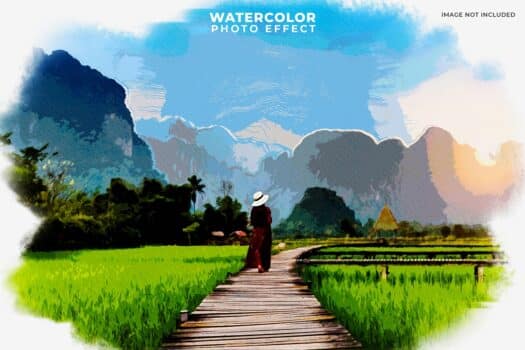
Vector art is a mainstream digital art form that uses algorithms and geometrical formulas to create all types of shapes, patterns, and lines in your art piece. You can resize and regenerate the vector paintings multiple times as per your needs without ruining their quality or resolution.
On top of this, the one-click operations of color change, flip, cast shadow, emboss, group, and other features make it pretty convenient to create a dynamic vector art piece. Many vector artists prefer to draw lines and patterns instead of choosing a fundamental shape to create a manual vector painting. Once they have hand-drawn the line art, applying color to the vector artwork becomes easier.
Furthermore, artists commonly use vector art to design simple logos or even full-scale portraits. This digital art form is quite common in advertising and designing website graphics for different businesses.
10. Raster Painting
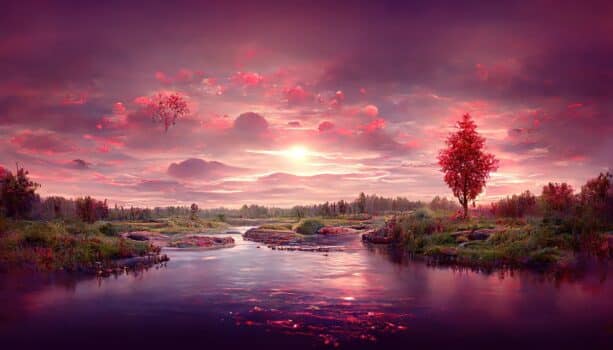
Raster art is the complete opposite of vector painting because it works exclusively with pixels or uses the raster layer. It is also called grid or bitmap painting and can be an excellent digital alternative to traditional painting. In raster painting, each line, pattern, and color is applied to your digital medium in the form of pixels.
In fact, raster painting includes almost every form of digital art that uses pixels to create 2D or 3D art pieces. If you want to generate high-definition digital artwork, you’ll have to add more pixels to the raster painting. You can also include the features and textures of an original art piece stroke by stroke with raster painting.
Not to mention, it’s easier to blend colors and create organic textures, brush strokes, and shapes using raster art and raster layers. However, on the downside, since raster painting uses pixels, you can’t enlarge or resize the painting as you wish because that can ruin its sharpness.
11. VR Painting
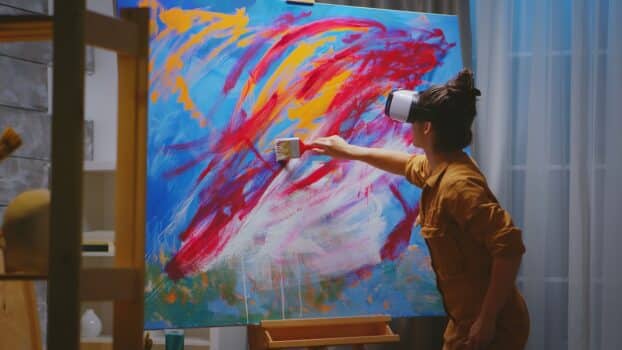
Ever since Virtual Reality (VR) gained immense popularity, the digital art industry started using this technology to create a new art style for the audience. The introduction of Tilt Brush by Google fueled the creative process even further, allowing artists to create stunning VR paintings in a three-dimensional space.
Technically speaking, the VR technology of Tilt Brush enables you to walk around the brush strokes physically so that you can paint from any angle. In that way, you can create a visually immersive art piece for the audience to be viewed as a 3D image or in VR. You can easily access Tilt Brush on any VR platform, including PlayStation, Vive, Windows Mixed Reality, and Oculus.
On top of this, VR has completely revolutionized digital art taking it somewhere it has never been before. Prior to VR, it was only an unreal fantasy for painters and artists to be able to paint into thin air while combining 3D painting and sculpting. Tilt Brush has turned this fantasy into reality, offering realistic mechanics of painting paired with physics to create lifelike digital art pieces.
12. Photobashing
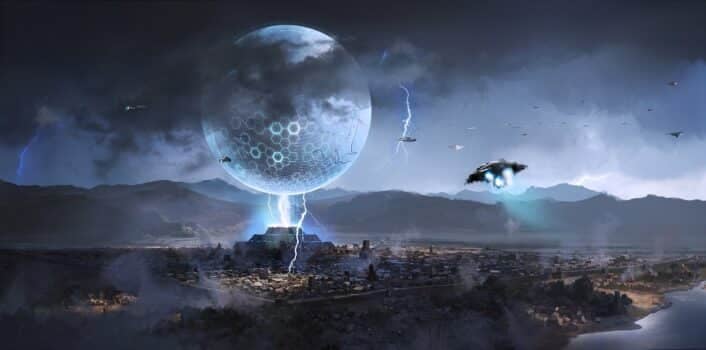
When Salvador Dali first introduced the concept of surrealism in art during the early 19th Century, it broke down the barriers between conscious reality and unconscious dreams. Its beauty was unique, uncanny, and unexpected, which monumentally changed how the viewers perceived art. Modern-day digital painters have been trying to use photo bashing to capture that same essence of surrealism that Dali tried to create on his canvas.
Photobashing opened a whole arena of dynamic paintings in the digital art world by combining 2D, 3D, and real-life images. You can also paint a portion of your art piece and include 3D graphics and textures for the other portions to create a dynamic effect with photobashing. In that way, you can incorporate the surrealist element to generate a visually stimulating and highly engaging feeling among the viewers.
Even though these paintings look realistic, they have a science-fiction or whimsical appeal to them. Photobashing artists often use the cyberpunk aesthetic to easily blend the elements of fantasy into reality. You can also use it to correct errors in your digital art piece by adding previously rendered objects. This form of dynamic painting is quite popular among concept artists for digital installation art.
13. Photo Painting
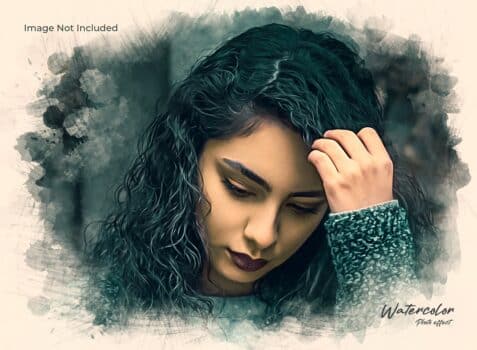
In photo painting, a photograph is used as a reference to create a minimalist digital painting by applying paint and textures over the forms and figures of the original photograph. You can use different colors to block any major patterns and exclude intricate details of the facial features as seen in the photo to create minimalist digital paintings.
Digital artists can also use software for image editing and painting to add more details if they want to create a hyper-realistic lifelike portrait instead of a minimalist painting. So, in photo painting, you can enhance or exclude the details of the existing piece, just like photobashing. Moreover, you can keep it completely traditional by adding only a few elements or make it entirely digital.
You can also strip down all the features of the existing photograph and play around with the basic geometrical shapes and create a more neutral color scheme. Although photo painting largely differs from photoshopping, you can use photo editing software like Adobe Photoshop for photo painting. Simultaneously, you can use digital painting software such as Corel Painter to create full-scale digital portraits using photo painting.
14. Digital Collage
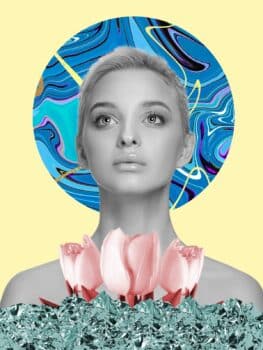
You probably have a basic idea of digital collage if you owned a scrapbook during high school because it’s basically a digital upgrade of the good old scrapbook. It is a form of interdisciplinary art that uses the concepts of mood boards, scrapbooking, and aesthetic mash-ups for combining images to create an entire image.
Digital collage allows you to think out of the box and let your creative ideas fly without any constraints. You can combine 3D assets, photographs, and even traditional paintings to create your digital collage. It also becomes easier to create visual illusions and distort reality with digital collages.
On top of this, you can use real-life photographs to create realistic illusions by pairing them with other art forms. Hence, creating art becomes fun and highly experimental with a digital collage where you can incorporate digital as well as other art forms in your piece.
But you’ll require some advanced digital tools and software to create stunning digital collages because the entire painting process happens on your computer screen. Picasa was arguably the most popular digital collage maker application before Google decided to discontinue it in 2016. At present, applications like PicsArt and PhotoGrid are widely used among artists for making enthralling digital collages.
15. Integrated Art
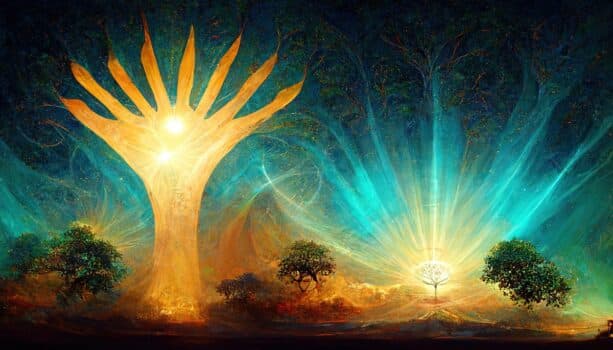
Integrated art is quite common in traditional painting, but it has also become increasingly popular in digital painting over the past few years. You can use different art forms and media while creating an integrated art piece. For instance, you can combine painting and photography, 2D and 3D graphics, or vector and raster paintings. With integrated art, you have the freedom to explore and experiment without any inhibitions.
You can find a resemblance between digital collage and integrated art. Still, the latter has expanded its horizons into a virtual reality where artists can combine rendered objects with real-time 3D environments. While traditional canvas painting didn’t leave much room for artists to incorporate different mediums in a piece, digital art allows them to push their boundaries and nurture innovation.
Not just other media, you also have the liberty to include various art forms, like writing, music, and theater, in integrated art. You can use specially designed software such as ArtRage to create unique and experimental integrated art pieces.
16. Mixed Media
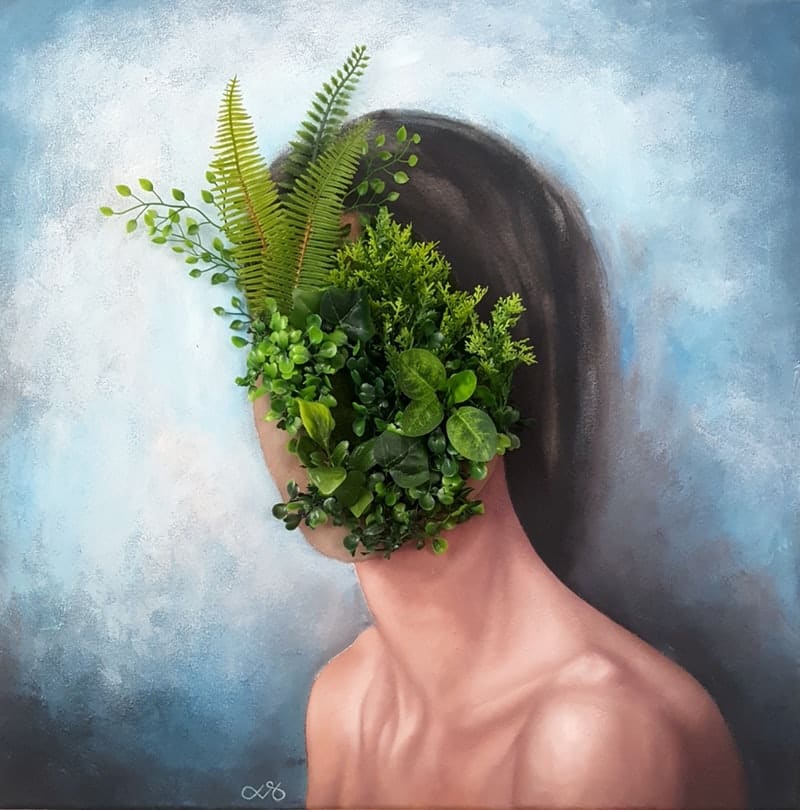
Image via bluethumb.com.au
If you’re into traditional painting, you must be well-acquainted with the concept of mixed media, where different mediums are combined to create a single stunning art piece. Although it originates from integrated art, mixed media focuses solely on blending multiple art mediums instead of playing with other art forms.
The merit of using more than one software helps increase the contrast level as well as the sharpness of colors of the vector. You can learn more about such graphic design programs here. The same benefit applies to the main palette of the raster too.
In traditional painting, artists usually combine mediums like pottery, glass, ceramics, and photography with their paintings. Similarly, paints and 3D models are popular medium choices for creating mixed media pieces in digital art.
You can paint 3D models in digital mixed media to create a lifelike and realistic art piece using different shades, lighting, textures, and brush strokes. In fact, mixed media allows your digital art to have enough depth and realism so that it doesn’t fall behind a traditional painting. So, it combines the aspects of both digital and traditional art.
17. Digital Photography
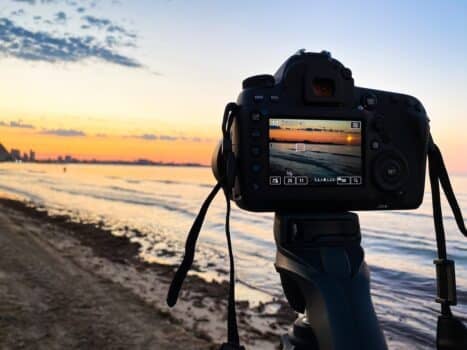
It should come as no shock that digital photography is the most commonly used digital art at present, and you don’t even need any prior experience in art to do it. The days of photo reels and developing photos in the darkrooms are long gone. Modern digital cameras allow you to capture unlimited photos and videos anywhere, anytime.
In this digital age, the cameras have SD card storage and the ability to focus, zoom, and filter any image. As a digital photographer, you can also select the automatic settings of your digital camera to control the aperture and light exposure while shooting.
Today’s digital cameras have revolutionized the art of photography, and capturing photos and videos has become a piece of cake, but the real beauty lies in the editing process. Since the photos are stored on the SD card, you can transfer them to your computer for editing using software like LightRoom and Adobe Photoshop.
The artistic process of digital photography doesn’t end with taking the photos because editing the photos to bring out their natural colors and stunning features is just as important, if not more. It might take some time to get the hang of using a digital camera, but once you face the learning curve, the world is your oyster!
B. AI Art
1. DALL-E Artificial Intelligence Digital Art System
Image via openai.com
Overview
DALL-E and DALL-E 2 are two excellent AI art tools launched by OpenAI that use Clip and Diffusion AI technologies. DALL-E 2 is the latest version and can create more authentic and realistic digital art pieces. It uses the technology of Clip to match an image to a given text to understand the different concepts related to that particular image.
That way, it can generate new images surrounding the same concepts pixel by pixel by applying Diffusion technology in the AI-based digital environment. While Clip can help you get the gist of the concepts for creating the digital picture, Diffusion enhances the sharpness and resolution of the image by eliminating Gaussian noise.
DALL-E 2 is a research project designed by OpenAI to help them achieve their goal of creating safe, general AI for their customers instead of developing task-specific AI systems. But since it’s still in the research phase, DALL-E 2 is not yet available on the market, and only a handful of people can access it.
How Does It Work?
Once you open the DALL-E platform, there’s a search panel where you can type anything, and the software will process the input to generate relevant digital images. Say you want to create an image of a blue apple in a bowl of oranges; DALL-E will create a number of brand-new images that never existed before based on your keywords.
The most attractive features of the images are their sharpness, realism, color contrasts, and shading. You cannot differentiate whether it’s a real photograph or a digitally created image at a single glance. Also, you can use specific keywords if you want to create an image with intricate details. So, the features of the output image will depend on your input keywords, no matter how bizarre they are.
However, DALL-E does more than simply create images based on your keywords. As an AI art tool, it uses its own imagination to incorporate necessary details, lighting, color contrasts, and much more in the image to make it more realistic and authentic.
You can also modify a real-life image however you want and turn it into a completely new digital image using the diffusion technology of DALL-E. For instance, you can transform a real photo of a modern iPhone model into a digital picture of an old corded telephone with this AI-art system. Thus, DALL-E can modify existing images to new digital images based on other existing concepts.
Drawback
DALL-E 2 has some intentional and unintentional shortcomings at its current stage. For instance, even though it has a massive image reference library, there’s no adult content or images depicting violence and illegal activities. This way, OpenAI can ensure that no one can use DALL-E 2 to create images related to those topics.
Furthermore, the AI-based art system cannot create images of people with real identities. So, you can’t ask it to generate random lifelike digital pictures of any celebrities or other known personalities for obvious security purposes.
Apart from these intended drawbacks, DALL-E 2 shows some unintentional technical quirks or glitches. For instance, it cannot process information about the relative positioning of objects in an image. So, if you type in the keywords to create an image of a blue box placed above a red box, DALL-E 2 might mess up their positions or colors.
Additionally, the AI art tool cannot create images featuring written texts because it faces some trouble processing the texts. Say you want to create an image of a signboard; you might end up getting an image with some jumbled letters with no coherent words. OpenAI plans to overcome these unintentional shortcomings of DALL-E 2 in DALL-E 3 in the near future.
2. Midjourney AI Digital Art System
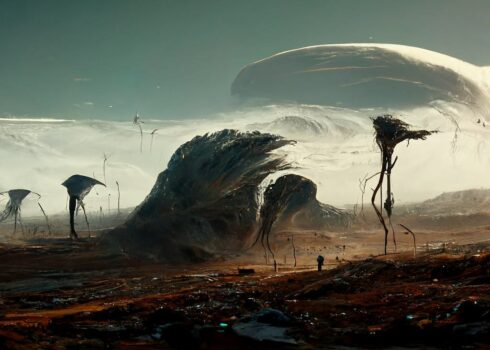
Image via creativeshrimp.com
Overview
Similar to DALL-E, Midjourney is an AI-based art system that uses textual descriptions known as prompts to create digital images. The AI art tool developed by Midjourney differs from DALL-E in terms of the textual descriptions because you feed the texts more in the form of codes instead of complete sentences in Midjourney.
You can use any prompts to generate hyper-realistic or abstract images with the AI system of Midjourney. Prompts are basically the keywords that you use to describe the image that you want to create. You can also use specific prompts to control the lighting and colors of your image.
The AI technology of Midjourney takes these prompts and applies the related concepts to develop the image. So, you can create a virtual illustration of your imagination and creative ideas by using prompts in Midjourney.
Moreover, you can determine the quality, aspect ratio, lighting, and other features of the image by using detailed prompts provided in the user manual. You can also consult the user manual to learn more about the basic commands and prompts that you can use to create superb hyper-realistic images.
How Does It Work?
Once you join the beta version of Midjourney by signing in with a valid email address and password, you can view the channels of other users for inspiration. If you want to create some original artwork, go to the “newbies” channel because it’s a public forum accessible to all users.
Now, to generate images, you need to locate the panel at the bottom of the server page where you can type in the prompts. First, you have to type the “imagine” prompt before you can use specific prompts for the image. Then, you can include more prompt details using commas, and once you’re done, hit the processing button to get the images.
After a while, four image options will appear in four quadrants describing your prompts, and you can choose any of them to upscale them and include more details. You can see the upscale options, U1, U2, U3, and U4, for the four images.
Similarly, you can also choose different variations of these four images by clicking on the V1, V2, V3, and V4 options. But if you don’t like any of the images, you can always choose the redo option to get alternative images for the same prompts.
Not to mention, you can view the artworks featuring the prompts of other users to learn more about how to use these prompts accurately to get better results. You can take their prompts, customize them, and other color-grading details to create a new image.
Drawback
Midjourney doesn’t offer the privacy option to unsubscribed users, and the public channel can often get too crowded and busy. If you want to work in a private channel, you can purchase a subscription from the standard and enterprise plans offered by Midjourney.
But whatever you create on this AI platform will be featured on the Community Feed. Other users can view it unless you delete the image or are willing to spend an additional $50 per month to keep it private.
Moreover, the sharpness and accuracy of the images might not be as good as real-life images. Their pixel quality can deteriorate if you try to zoom in to view the details.
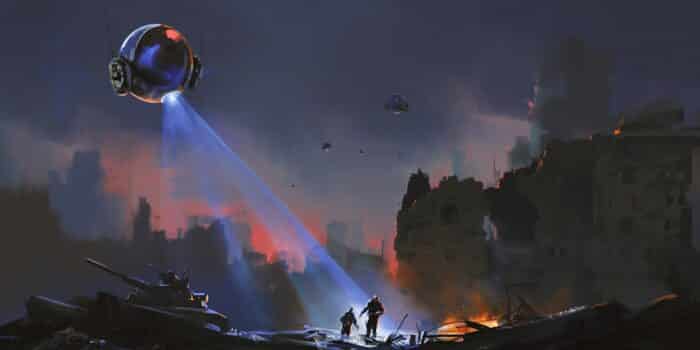
Digital Art Final Thoughts
It’s safe to say that digital art has taken the world by storm, making art on canvas look like a thing of yesteryear. Gone are the days of expired paints and dirty paintbrushes because digital art is here to stay!
With the constant technological advancements surrounding VR, CGI, and AI, one can only assume that the digital art world will be expanding into new arenas in the coming years. The extraordinary blend of technology and creativity makes digital art a solid competitor to conventional art.
However, concerns might arise about AI art tools and whether they can put human artists out of business. It’s a question yet to be answered that only time can tell. All you can do is embrace these technological innovations and let your creative juices flow.
On that note, we bid you farewell. Take care and see you next time!

